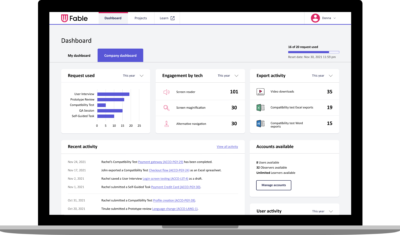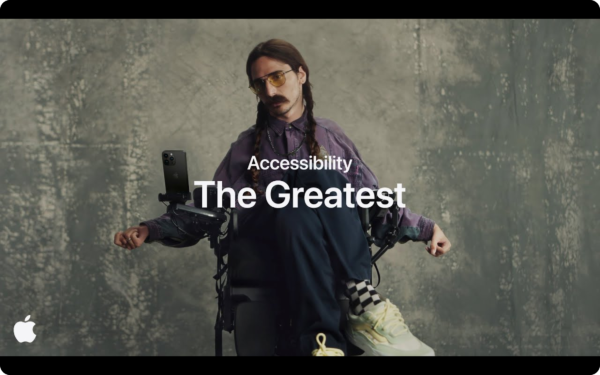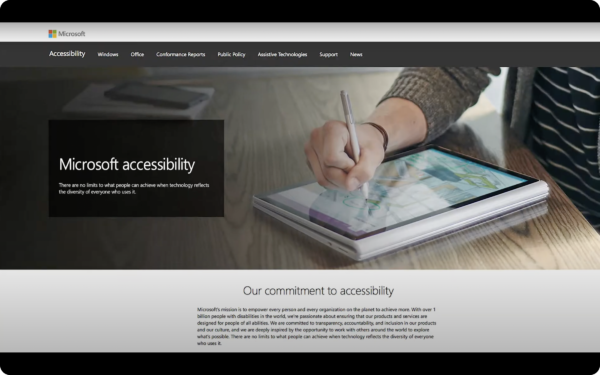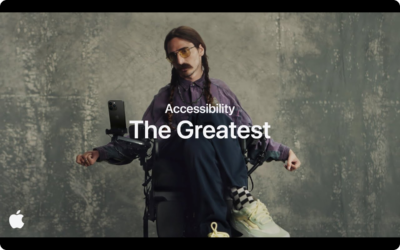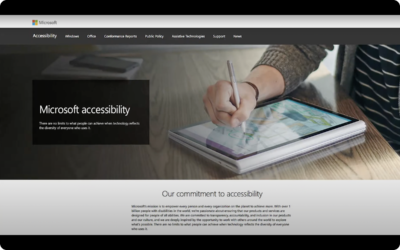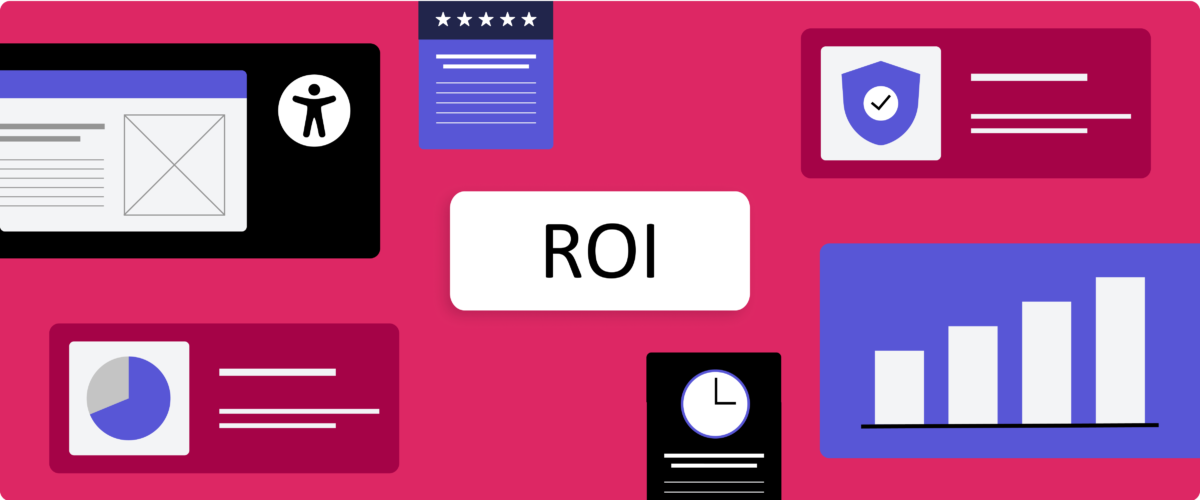
The compounding value of investing in digital accessibility and usability
How product testing with people with disabilities will grow your business
Most of us know that accessibility is something we should care about or implement into our work somehow. Nobody would argue against equal access to digital products and services for people with disabilities.
What is often not widely discussed or clearly articulated is the strong business case for engaging with people with disabilities in the early stages of designing and developing new products. So, it can be challenging to understand why accessibility is important for you to invest in right now. Particularly in the current economic climate.
Investing in accessibility and creating usable experiences for people with disabilities in 2023 will yield returns this year, and well into the future.
- Accessible and usable products benefit everyone
- Shift beyond compliance to expand your reach
- Tap into the world’s largest unaddressed market segment
- Grow your customer base
- Gain brand loyalty & market share
- Accessibility as a marketing differentiator
- Drive operational efficiency
- Proactive approach to product development
- Get your 2023 competitive advantage
Definitions: accessibility, usability and assistive technology
Before diving into the value of accessibility and usability, it is important to clarify some key terms.
- Accessibility: refers to access. When something online is accessible, people with disabilities can equally perceive, understand, navigate, and interact with it.
- Usability: is about designing digital experiences that are usable. In other words, intuitive, easy to use, efficient, and enjoyable.
- Assistive technology: Similar to keyboards and mouses, assistive technology increases, maintains, and/or improves the functional capabilities of a device such as a cellphone or laptop. They enable people to use their devices and in turn participate in the digital world. Assistive technology types include products like screen readers, screen magnifiers, and alternative navigation.
Learn more about assistive technologies in Fable’s Assistive Technology Glossary.
Accessible and usable products benefit everyone
When your product or website is accessible and usable for a person who has a disability, it is intuitive, easy to use and enjoyable for someone who does not.
The opposite is also true. Inaccessible experiences are most often confusing, hard to use and frustrating for everyone, including those without disabilities.
In her paper “Accessibility first: rethinking the way we approach website design and development”, Carie Fisher, the founder of A11yTalks (Accessibility Talks), highlights that in order to make your products accessible and usable for the greatest number of people, you should test your product with the top 25% users who will have the most challenges using your website or product. You will then cover the needs of users who have less difficulties using your service (~74% of the population). Fisher calls this the “trickledown effect for accessibility”.
Consider features like dark mode, voice to text, autocomplete, Siri, pinch to zoom, and voice assistants. These all started as accessibility features made for those with disabilities. Now, these are products must haves loved by all. Captions were initially created for those who are deaf and hard of hearing. Now, 85% of Netflix users (196,350,000 people) use captions regularly.
As Jutta Treviranus, Director and Professor of Inclusive Design Research Centre at OCAD University, said “when you design for the margins, you get the middle for free.”
People without disabilities often use accessibility features when they are experiencing temporary or situational disabilities.
Sam Proulx, Fable’s Accessibility Evangelist, explains:
“You depend on the automatic door opener at the grocery store because your arms are full, and you can’t push the door open right now. You depend on the hands-free mode because you’re driving, and you can’t look at or touch your phone. You may be getting a little older and it’s hard to see your phone screen, so you use pinch to zoom.
When we think about building accessible and usable products, we’re thinking about products that will work for every situation that we find ourselves in now. But also, products that will work for both our current and future selves.”
Shift from compliance to usability to increase reach
Products that are WCAG compliant are not necessarily usable for people with disabilities.
Minimum legal compliance won’t get you the benefits of tapping into this growing audience. Without usability, you’re putting in all the work without the benefit to both people with disabilities and your bottom line.
In 2019, Nielsen Norman Group completed a study of usability testing, focus groups, and contextual inquires with individuals over 65 to determine how seniors use technology and to offer recommendations on how digital products can be improved to meet their needs.
They noted that while this age group has the highest household wealth of any group according to The US Census Bureau “digital products often fail this growing and wealthy demographic.”
The second reason stated for why using online services and products is challenging for seniors was:
“Inflexible and unforgiving interfaces… as interfaces in websites and apps are often inflexible and unforgiving of errors… Older users make more mistakes than younger users do…The design choices that irritate younger users create substantial barriers to access for older ones.”
When your products are usable to people with disabilities, you can additionally reach, sell to, and stand out amongst your competitors to a demographic with the most to spend. What leader would say no to investing efforts into doing that?
In 2023, usability is a competitive advantage.
Tap into the world’s largest unaddressed market segment
People with disabilities have a spending power of $490 billion in disposable income in the US. In the UK, 4.3 million disabled online shoppers click away from inaccessible websites and have a combined spending power of £16 billion (average per head) and £274 billion (household).
The disabled population is further increasing for a multitude of reasons. People are living longer and there has been a global rise in noncommunicable diseases (such as diabetes, Parkinson’s, cancer, and cardiovascular conditions). U.S. Bureau of Labor Statistics (BLS) reported in 2021, during the COVID-19 pandemic, 1.2 million more people identified as having a disability than in 2020. 1 in 13 Americans further have Long COVID symptoms (which was deemed a disability by the ADA in 2021).
Our world’s biggest generations (boomers and millennials) are currently aging. More of our population will require many of the same assistive technologies and usability considerations to use digital products as people with disabilities do today.
When you picture your end user, do you picture someone who uses assistive technology when navigating websites? Someone who is aging with a bit of memory loss and slower movements taking longer to interact with your website’s layout? If not, you are actively limiting your reach into a potential market of billions of people globally.
This is why people with disabilities are the world’s largest unaddressed and growing market segment.

Grow your customer base
When people are thinking about whether to invest in accessibility, we often hear them ask:
“How many people with disabilities will actually use my product if it is accessible?”
Well, getting an accurate answer to this question is challenging as this question misses an important piece of the story.
People with disabilities will not use your product or service if it is not accessible or usable for them. Think of it like the chicken and the egg – which comes first?
Even if you could know how many people with disabilities are currently using your product or website, that number would not be indicative of how many people with disabilities would join your customer base if you had accessible and usable experiences.
If your product or website is inaccessible or not usable for people with disabilities, you are missing out on a huge market segment. People with disabilities are not a small or isolated group. 1.3 billion people in the world have a disability, that’s 16% of our global population. In the US, 1 in 6 people have a disability.
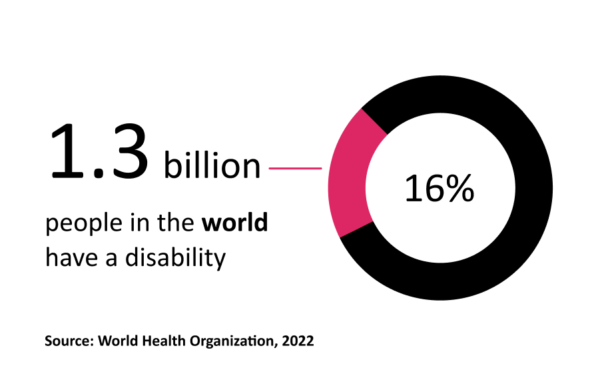
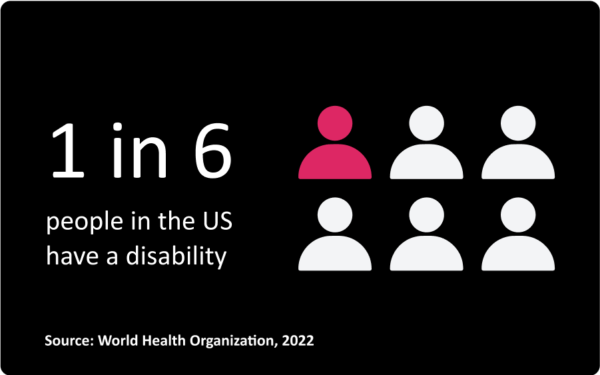
Grow your customer base
When people are thinking about whether to invest in accessibility, we often hear them ask:
“How many people with disabilities will actually use my product if it is accessible?”
Well, getting an accurate answer to this question is challenging as this question misses an important piece of the story.
People with disabilities will not use your product or service if it is not accessible or usable for them. Think of it like the chicken and the egg – which comes first?
Even if you could know how many people with disabilities are currently using your product or website, that number would not be indicative of how many people with disabilities would join your customer base if you had accessible and usable experiences.
If your product or website is inaccessible or not usable for people with disabilities, you are missing out on a huge market segment. People with disabilities are not a small or isolated group. 1.3 billion people in the world have a disability, that’s 16% of our global population. In the US, 1 in 6 people have a disability.
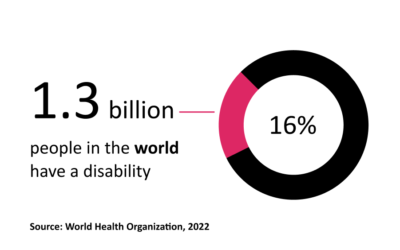

Gain brand loyalty & market share
When you find digital products or services that feel intuitive and easy to use for you, you come back to that product. You’ll recommend it to your friends, family, and colleagues. If you have a bad experience navigating a digital product or service, you will move on to a competitor.
This is also true for people with disabilities. Assistive technology users and those with disabilities show brand loyalty towards companies that have accessible and usable experiences. They will choose your competitor who has a more usable and accessible experience.
The Business Disability Forum (BDF) completed a study titled “What disabled consumers buy and why” in 2021 that reported 43% of disabled consumers abandon an online or in-person shopping task early due to “a paucity of information on design and how it might relate to accessibility.” 65% of disabled consumers further felt their purchasing choices were limited on a daily basis.
When your product is usable and accessible for people with disabilities this is a brand differentiator that will quickly allow you to gain a significant market share over your competitors.
Accessibility as a marketing differentiator
In today’s world, buyers of both B2B and B2C products and services are becoming more value driven. Global Market Research and Public Opinion Specialist, IPSOS, surveyed consumers across 25 markets across the globe, seven in ten (70%) respondents said they tend to buy brands that reflect their personal values.
People today are more aware of social issues, including the discrimination against people with disabilities – both offline and online. Buyers today value inclusion and want to see those values reflected in the brands they buy from or partner with.
Technology companies have been tapping into this by highlighting their values in their marketing strategies. This is often referred to as sparking brand affinity.
Highlighting your accessibility strategy, features and progress in marketing assets has become an effective way to highlight your brand values.
Here are some recent examples from technology companies.
It’s important to note that Figma, Microsoft, and Apple are not stating their products are completely or perfectly accessible here. This is not the goal. Rather, they highlight accessibility and the experiences of people with disabilities is something that they care about, think is important, and are working to improve.
Accessibility and usability are both a journey, it is something even we here at Fable are consistently working towards. Those who value accessibility just want to see that you’re on that journey – that your product’s accessibility and usability for people with disabilities is consistently improving.
The growing number of value-driven buyers will choose your competitor who is already on that journey.
Accessibility as a marketing differentiator
In today’s world, buyers of both B2B and B2C products and services are becoming more value driven. Global Market Research and Public Opinion Specialist, IPSOS, surveyed consumers across 25 markets across the globe, seven in ten (70%) respondents said they tend to buy brands that reflect their personal values.
People today are more aware of social issues, including the discrimination against people with disabilities – both offline and online. Buyers today value inclusion and want to see those values reflected in the brands they buy from or partner with.
Technology companies have been tapping into this by highlighting their values in their marketing strategies. This is often referred to as sparking brand affinity.
Highlighting your accessibility strategy, features and progress in marketing assets has become an effective way to highlight your brand values.
Here are some recent examples from technology companies.
It’s important to note that Figma, Microsoft, and Apple are not stating their products are completely or perfectly accessible here. This is not the goal. Rather, they highlight accessibility and the experiences of people with disabilities is something that they care about, think is important, and are working to improve.
Accessibility and usability are both a journey, it is something even we here at Fable are consistently working towards. Those who value accessibility just want to see that you’re on that journey – that your product’s accessibility and usability for people with disabilities is consistently improving.
The growing number of value-driven buyers will choose your competitor who is already on that journey.
Drive operational efficiency
It’s not uncommon for organizations to invest in accessibility because they must, due to customer complaints or legal action.
Waiting to test accessibility only at the quality assurance stage is too late. Minor accessibility issues that could have been fixed with a single line of code may now have grown to be complex bugs.
When you include people with disabilities early and throughout the design and development cycles, teams can solve problems as they arise. Allowing you to save time, effort, and money in the long run.
This is why Fable Engage works within our customers’ sprint cycles and customer’s accessibility testing requests are completed within two days. As design thinking teaches us, testing with users often and early in the product development cycle is how you create experiences your ideal customer will love and keep coming back to.
Think back to the “trickledown effect of accessibility.” Testing early and often is made more effective and efficient with ongoing product testing and research with people with disabilities.
Proactive approach to product development
When you focus on creating usable experiences over accessibility auditing or only using automated accessibility solutions your product development will become more efficient.
When you complete an accessibility audit, you usually get a list of updates that need to be made to your product to make it technically accessible or WCAG compliant. If you are operating on a 2-week sprint cycle or consistently updating your product or service, this list is often made redundant really quickly.
That list is also not prioritized. It is unclear which updates or errors will really improve the experiences of people with disabilities and what will not. So, you could spend months focused on updates that have no real impact.
Your product team could then be replicating the very thing that is making your product unusable without ever knowing.
If you regularly test your product or website with people with disabilities, you can determine what updates or features to prioritize as you’ll see what the biggest usability roadblocks are. Fable’s team of digital accessibility experts will additionally guide you in how to address those roadblocks in your existing product development cycles.
This will allow your design and development teams to move faster and create more impact, which can yield huge returns. IBM was able to see as much as a 75% reduction in design and development time with their design thinking approach that improved team efficiency. This resulted in a calculated ROI of more than 300%.
A human-centered approach to product development that includes usability testing with people with disabilities will not only allow you to sell more audiences but save money and time in your development cycle.
Get your competitive advantage
Questions about how accessibility and usability will add value to your unique business? Schedule a call with a Fable team member to learn more.
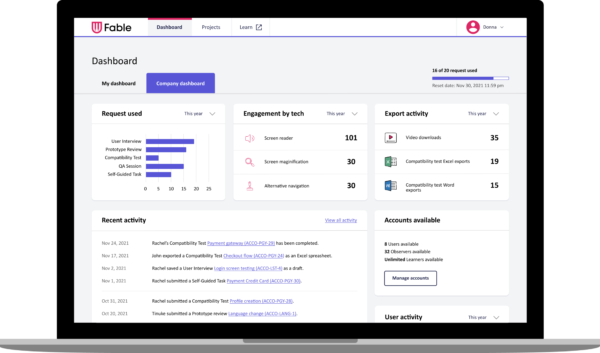
Get your competitive advantage
Questions about how accessibility and usability will add value to your unique business? Schedule a call with a Fable team member to learn more.
